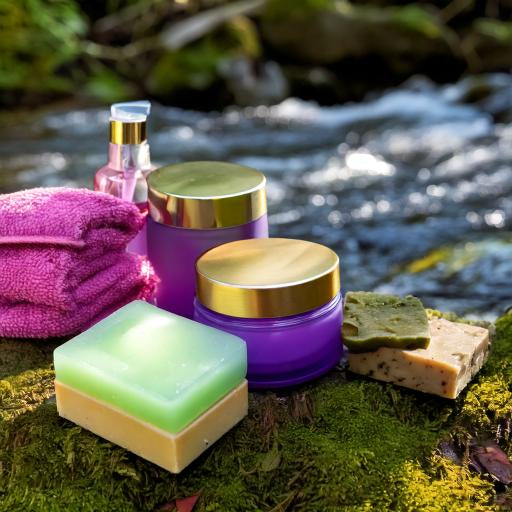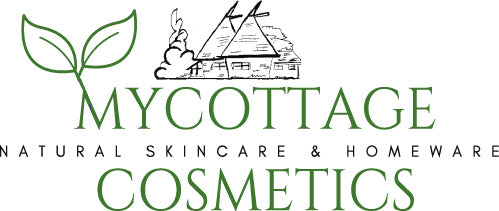
Probiotics Vs. Traditional Skincare: What's The Difference?
Probiotics and traditional skincare have both found a place in modern beauty routines. Each approach offers its own set of benefits and challenges. I examine the differences to help you decide which method might work better for your skin.
Understanding Probiotics and Traditional Skincare
I have noticed growing interest in using probiotics in skincare. Probiotics refer to live microorganisms that can support the skin's natural balance. Many people use topical probiotic products to help maintain healthy skin by boosting the skin’s natural defences. These products often aim to support the skin's microbiome so that it can fend off irritants and reduce inflammation.
In contrast, traditional skincare revolves around well-known ingredients such as cleansers, moisturisers, antioxidants. These ingredients have been used for many years to target visible signs of aging, dry skin, and acne. They work directly on the skin cells, often offering immediate improvements or specialised treatments. This approach has been guided by scientific research and clinical experience over decades.
Understanding how each skincare system works is important. Probiotics help optimise the beneficial bacteria on the skin, while traditional products typically apply compounds designed to cleanse, hydrate, and treat various skin concerns. When used correctly, both approaches can contribute to skin health.
Understanding How They Work
Probiotics in skincare introduce beneficial bacteria to the skin’s surface. These bacteria interact with the skin cells to help maintain the natural protective barrier. They can improve the skin’s immune response and fortify defenses against environmental stressors. The science behind probiotic skincare emphasises the importance of a healthy microbiome as a foundation for radiant skin.
Traditional skincare products often work by delivering active ingredients directly onto the skin’s surface. For example, chemical exfoliants remove dead skin cells while peptides stimulate collagen production. These ingredients have a targeted approach and can help smooth uneven skin textures or reduce visible lines. Most conventional products have a more direct action compared to probiotic formulations.
This contrast in mechanisms leads to different experiences with each product. Probiotic skincare is usually milder and can offer long-term support for skin health. Traditional products may provide faster, sometimes more dramatic, results on surface concerns. Deciding between them depends on the goals you have for your skin. However we have found a way with our probiotic skincare approach to have both the probiotic effect and the traditional effect by adding highly effective botanicals into the preparations.
Key Differences Between Probiotic and Traditional Skincare
The differences between these two approaches can be summarised by their main objectives and the way they deliver benefits. Here are a few key points that help clarify how they differ:
- Mechanism of Action: Probiotic products aim to balance the skin's natural flora, assisting the skin to heal and protect itself over time. Traditional products generally use chemical ingredients that actively change the skin’s surface, offering visible changes in texture or appearance.
- Gentleness and Tolerance: Probiotic skincare is typically very gentle and is often recommended for those with sensitive or easily irritated skin. Traditional products may sometimes cause dryness or irritation if the active ingredients are too strong, especially for sensitive skin types.
- Time to See Results: Traditional formulations might offer quicker visible improvements, especially for issues like acne or discoloration. Probiotic products generally build benefits gradually, supporting long-term skin health and resilience.
- Scientific Basis: Much research has been done on traditional skincare ingredients, and many of their benefits are well understood. Probiotic skincare is a more recent development and is still being explored, although early studies show very promising outcomes.
Important Factors to Consider When Choosing Your Skincare Approach
Making an informed decision about which skincare method to use involves assessing your skin type, concerns, and personal preferences. I have spent time looking at several important factors that you might want to consider:
- Skin Sensitivity: Some people have skin that reacts to strong chemical ingredients. Probiotic products, with their gentler approach, may be a better option for managing sensitivity.
- Long-Term Skin Health: While traditional products can provide quick fixes, probiotic skincare aims for long-term balance and protection of the skin barrier.
- Ingredient Purity: Many traditional products contain synthetic compounds that offer rapid results. If you prefer ingredients closer to natural formulations, probiotic products, which often use purer forms of bacteria and gentle compounds, might be more appealing.
- Cost and Availability: Traditional skincare has a wide range of price options, from drugstore products to high-end brands. Probiotic skincare offerings are growing and can vary greatly in cost. It is very important to consider your budget and review ingredient quality before purchasing.
Advanced Tips for Incorporating Probiotics in Your Skincare Routine
Once you familiarise yourself with the basic differences, you might consider blending the benefits of both approaches. In my experience, combining probiotic skincare with traditional products can offer a well-rounded routine. Here are some advanced pointers:
Integrate Gradually: If you are new to probiotic skincare, introduce the products slowly. Begin with one probiotic product in your routine and use it alongside your usual traditional items. This gradual method helps your skin adjust to the live cultures without overwhelming it. With careful integration, you can notice a smooth transition and balanced skin.
Monitor Your Skin’s Response: Keep track of any changes or improvements in your skin. This practical approach allows you to adjust your routine as needed. If you notice any negative reactions, consider adjusting the application frequency.
These tips have helped me build a balanced skincare routine that supports both immediate needs and long-term skin health.
What to Look for in Skincare Products
Knowing what to look for when selecting skincare products is instrumental in building a routine that suits your skin. It is important to check labels, compare ingredients, and consider your skin type and concerns. I tend to prioritise a few key aspects when shopping for both probiotic and traditional products.
- Ingredient Transparency: Look for brands that clearly list all their ingredients. Transparency builds trust and helps you avoid unnecessary additives. On all our labels you will find all the ingredients listed.
- Balanced Formulations: Products that combine gentle probiotic cultures with supportive ingredients can deliver both immediate and lasting benefits. Finding the right balance is very important. We include higly effective botanicals such as nordic superfruits, hyaluronic acid and bisobolol.
- Suitability for Your Skin Type: Whether your skin is oily, dry, or combination, choose products designed to work in harmony with your skin’s natural balance. Personalised solutions often produce better outcomes. You will often find that probiotic skincare products will suit all skin types.
Choosing products with these key features greatly helps streamline a skincare routine. It reinforces my belief that understanding product labels and ingredient lists empowers you to make the most informed decision for your routine.
Frequently Asked Questions
This section addresses some common questions I have encountered about probiotic and traditional skincare methods:
Question: What are probiotics in skincare?
Answer: Probiotics are live microorganisms that support the natural balance of bacteria on your skin. They help reinforce the skin’s barrier and reduce the occurrence of irritation.
Question: Can I use both probiotic and traditional skincare products together?
Answer: Yes, many users find that combining these approaches can offer both immediate and long-term benefits. However, it is advisable to introduce new products gradually and monitor your skin’s response.
Question: How long does it take to see results from probiotic skincare?
Answer: Probiotic products generally work slowly by supporting the skin’s natural balance. Some users notice improvements after a few weeks, while traditional products might offer faster visible changes.
Question: Are there risks with trying probiotic skincare?
Answer: Probiotic products are designed to be gentle. Nonetheless, it is important to choose items from reputable brands and check for any potential allergies or sensitivities in the ingredient list.
Conclusion
Understanding the difference between probiotic and traditional skincare is helpful when designing a routine that suits your skin. Traditional products offer targeted active ingredients that deliver quick changes, while probiotic formulations support long-term skin health by maintaining balance. Your unique skin needs will guide you in selecting the right mix of products.
By comparing the two approaches, you can better appreciate the role of ingredient quality, formulation balance, and gradual integration into your routine. I have found that being well-informed about the science behind these products and their benefits leads to more confident choices. Explore these options and adjust your routine based on what your skin responds to best. Your everyday skincare experience can become both protective and nurturing with the right mix of probiotic and traditional products.
Additional Considerations for a Successful Skincare Routine
Finally, remember that your skincare routine is a personal adventure. What works brilliantly for one person may not be the perfect solution for another. Testing different approaches and taking advantage of seasonal variations can help you fine-tune your routine, allowing your skin to thrive in every situation.
This extra layer of attention not only boosts your confidence but also helps ensure that your approach stays fresh and effective as new research and trends emerge. Taking the time to understand and regularly refine your skincare routine can set you up for lasting success and a vibrant, healthy complexion.
